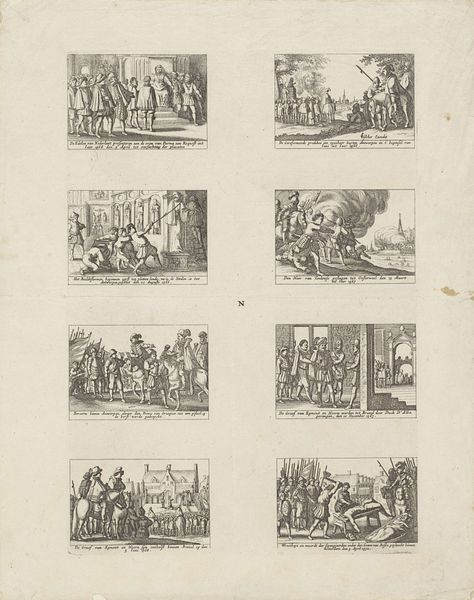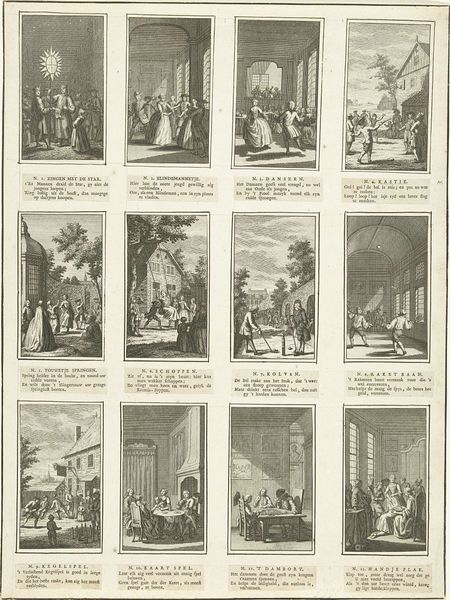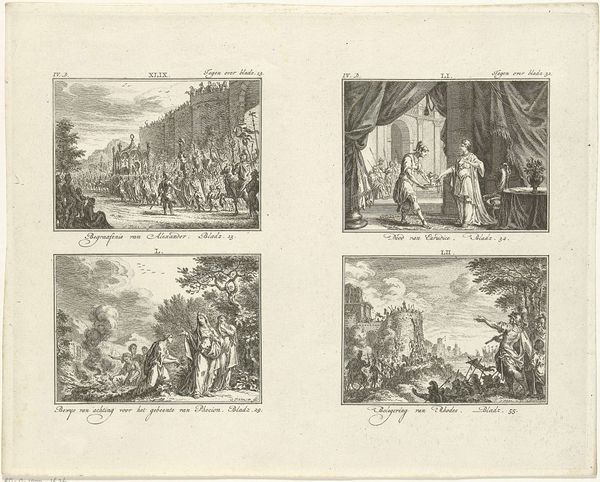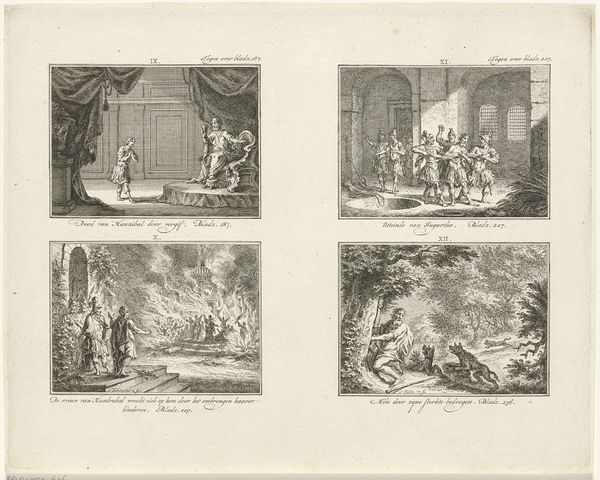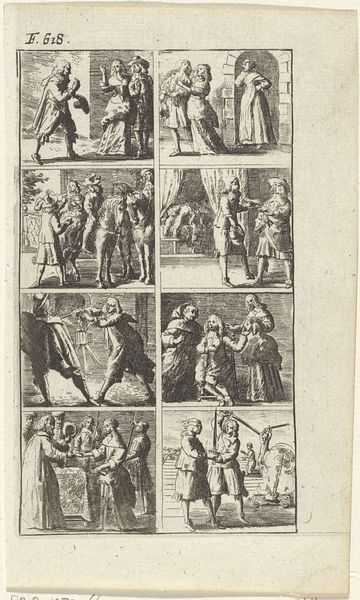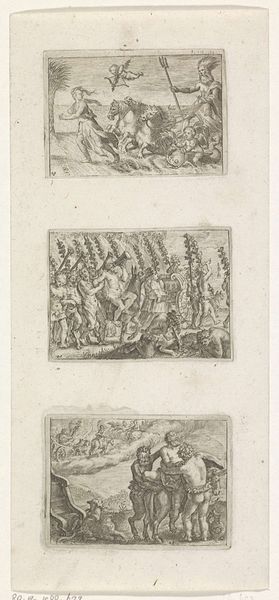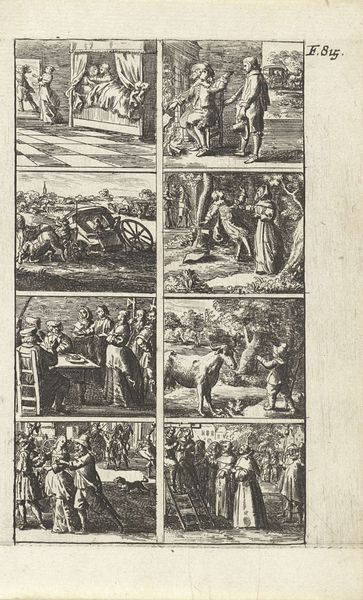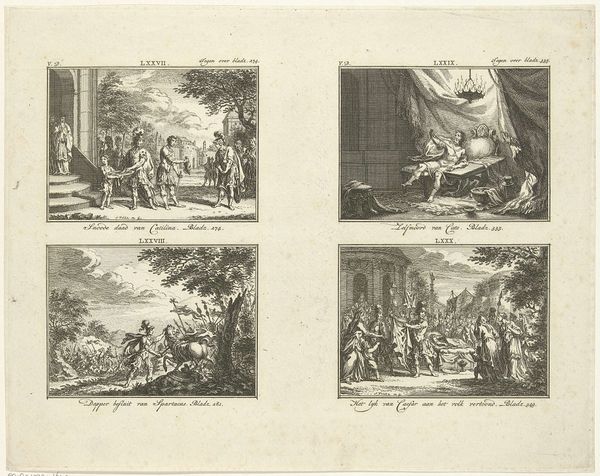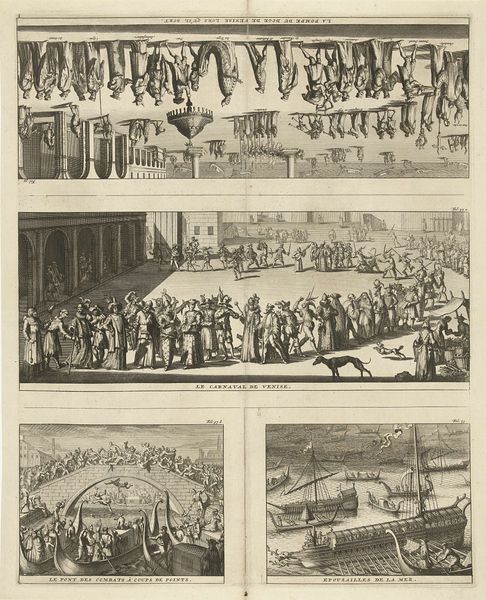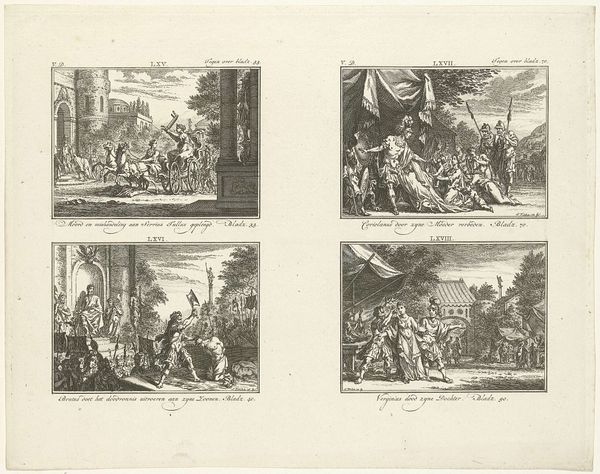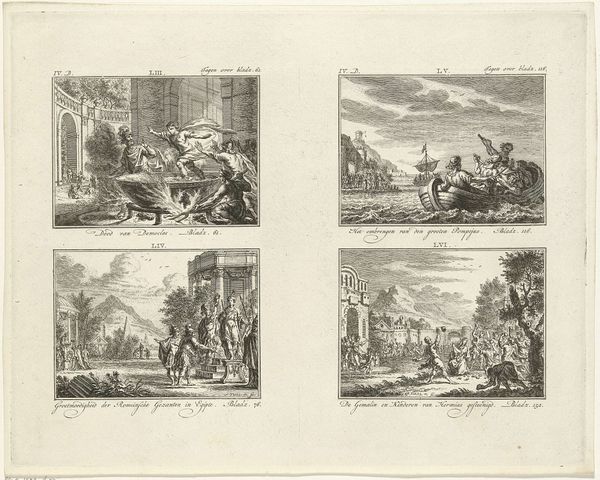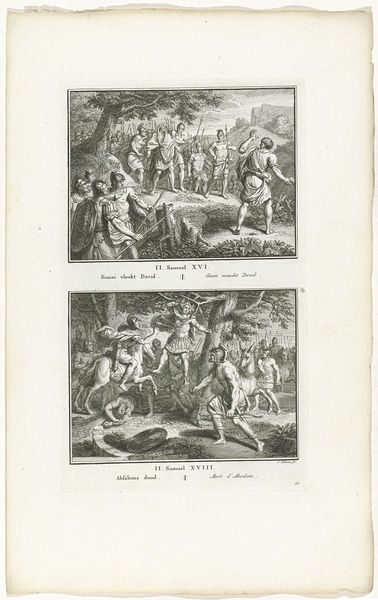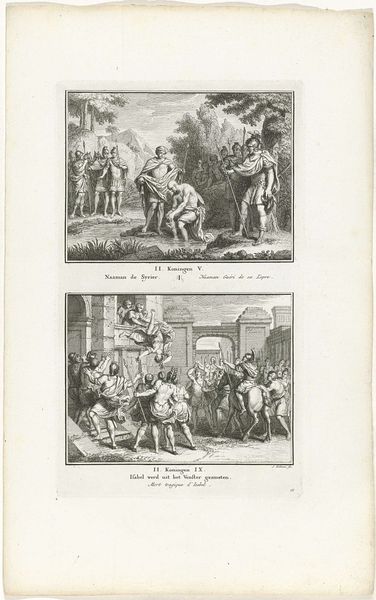
print, etching, engraving
#
narrative-art
#
dutch-golden-age
# print
#
etching
#
cityscape
#
history-painting
#
engraving
Dimensions: height 380 mm, width 264 mm, height 346 mm, width 244 mm
Copyright: Rijks Museum: Open Domain
Curator: The stark quality of the engraving immediately jumps out—an exercise in contrasts. Editor: Indeed. We’re looking at Claes Jansz. Visscher's "Wederdopersoproer in Amsterdam en Friesland," dating from after 1601, currently residing here at the Rijksmuseum. It meticulously recounts the Anabaptist riot in Amsterdam and Friesland. Curator: "Meticulously" is a strong word. Its impact comes precisely from the stark linear division of the scene into a sequential narrative. A proto-comic strip, almost! Each miniature scene contains figures depicted in dramatically distinct poses. Editor: Precisely—because what’s fascinating to consider is Visscher’s own social position in making this print. How did the artist acquire the materials, who was the target demographic, and what's revealed in these panels regarding 17th-century views on religious tolerance? Curator: Perhaps a generalized warning about the chaos inherent in radical societal challenges? The work eschews explicit commentary in favor of a play between light and dark, balanced in a composition emphasizing dynamism and implied motion. Look at the way the rioters seem to spill out from the panel’s border. Editor: And that spilling-out relates directly to distribution! Was this meant for wide dissemination? Was it used in some way by civic authorities? The materiality gives clues about the scope and urgency of the message. Curator: That remains debatable, but without question, Visscher uses the graphic elements inherent to the engraving medium to generate palpable tension and unease in the viewer. Editor: Yes, an unease created from labor, printing process, ink, paper, and all those invisible but foundational structures shaping even something as seemingly straightforward as a historical print. Curator: A fascinating intersection of intent, medium, and interpretation. Editor: A perfect example of history rendered through material and visual encoding.
Comments
No comments
Be the first to comment and join the conversation on the ultimate creative platform.
